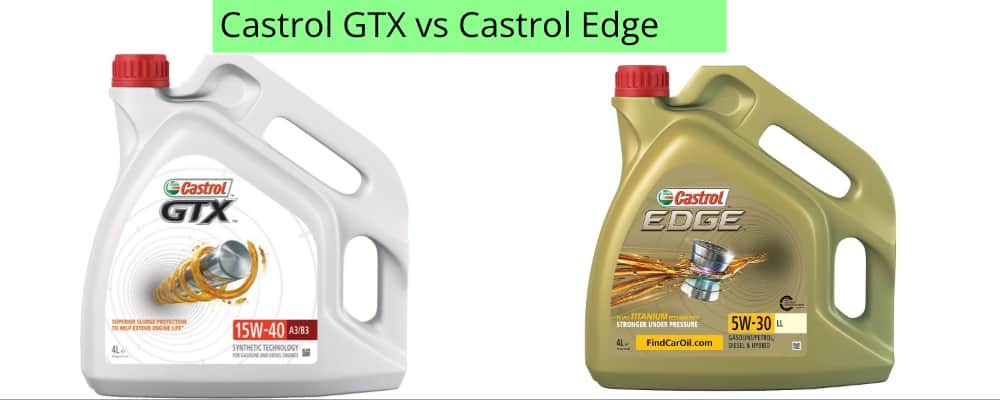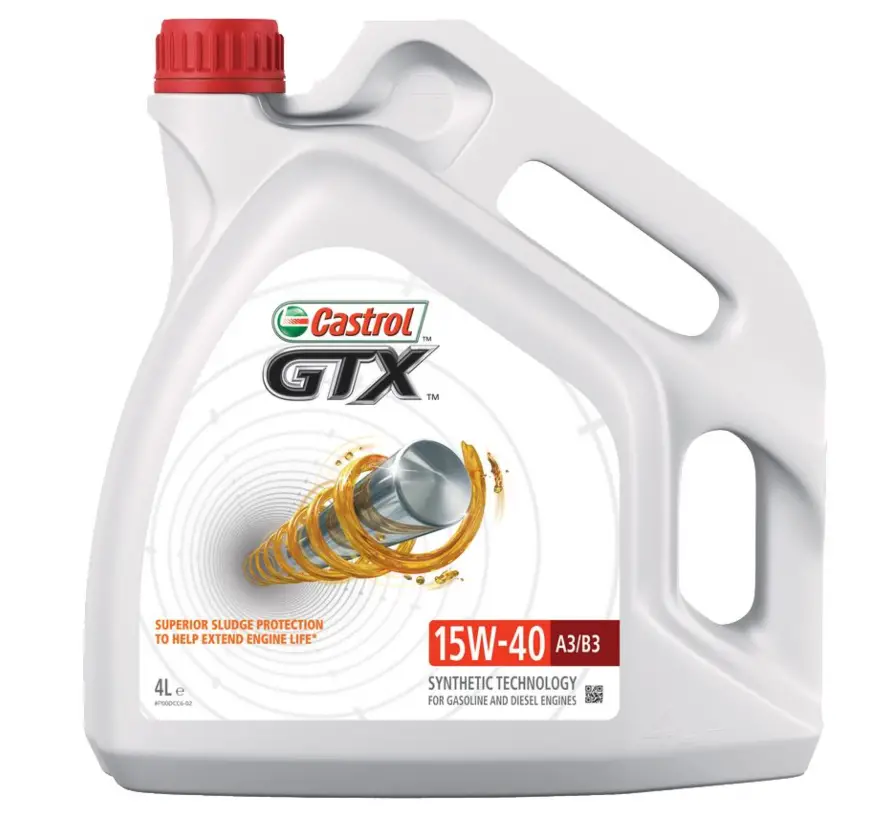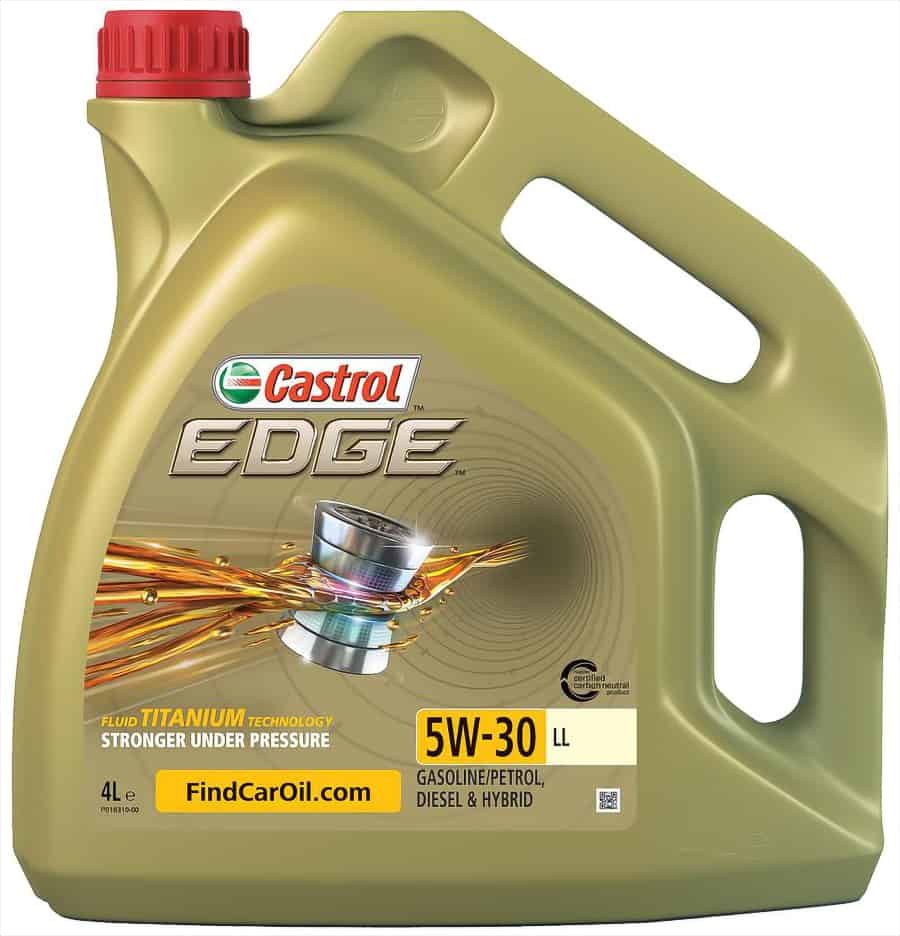
Your vehicle can only ride smoothly when the engine has suitable motor oil. Castrol satisfies all engine needs with its range of motor oil products, including Edge and GTX, which are both so excellent that you might find yourself unsure which to use.
Choose GTX if your vehicle is old and has high mileage, as it will be cheaper and work better. Go for Castrol Edge if you expect top-notch performance. Though expensive, it comes with better lubrication and greater resistance to breakdown.
This article will discuss the similarities between the two products and highlight the strengths of each. It will also compare different GTX and Edge varieties to help you decide which one would serve your car best.
Basic Similarities Between Castrol Edge and GTX
At their core, Edge and GTX have the same purpose, which is to keep the engines running optimally. This is why Castrol and other oil companies are always exploring new liquid engineering technologies that will enhance the performance of their products.
If you are a fan of F1, you will often see Castrol’s logo on the racecars, which is their way of demonstrating that their products are engineered to work with even the most powerful engines.
Though both products can withstand high temperatures, GTX has advanced protection technology against higher temperatures. On the other hand, Edge is promoted as being ten times stronger against high oil temperature thickening.
Both of them are anti-sludge in general, but GTX is said to offer superior anti-sludge protection. On the contrary, Edge comes with Fluid Titanium Technology, which allows it to offer enhanced friction reduction in addition to anti-sludge protection.
Let’s now look at what sets each product type apart.
The Castrol GTX: Pros and Cons

| Pros | Cons |
|---|---|
| Generally cheaper due to less complex manufacturing processes | Not as adaptive as Edge to higher temperatures |
| Designed to be anti-sludge | Loses more flow when exposed to the cold |
| Works best with older cars with high mileage | Has a shorter lifespan |
Although the GTX lineup varies in each market, these GTX varieties are the most common: the original GTX and GTX Ultraclean.
Some GTX Varieties Contain Phosphorus, Which Reduces the Effectiveness of the Exhaust Catalyst
The first thing that differentiates GTX is its chemical makeup. GTX is a conventional motor oil entirely made up of refined petroleum.
GTX contains phosphorus molecules, which are an essential component of motor oil as they keep the engine from wearing out. Unfortunately, they also actively hamper the effectiveness of the exhaust catalyst. If you drive your car around a lot, you’ll continually degrade the exhaust as you burn through the motor oil.
Some GTX varieties, luckily, have an alternative to the phosphorus additive. This ensures that while the engine is protected, the catalyst isn’t compromised.
GTX High-Mileage Variety Is Excellent for Vehicles With High Mileage
If your vehicle has high mileage, say higher than 200,000 miles, you’ll find the Castrol GTX high-mileage variety useful. With regular oil changes and basic maintenance, you can go for a long time without mechanical problems.
The first quality of the GTX high-mileage variety is that it swaps out some of the phosphorous with alternatives that protect the engine from wear. And since phosphorous-related problems are one of the leading causes of engine trouble in high-mileage vehicles, this improvement significantly enhances the health of your engine.
The high-mileage variety also features superior burn-off protection and advanced measures against sludge buildup. Also, it prolongs the life of the older metal parts and seals in an engine and is great for offroad vehicles.
GTX Has Excellent Anti-Sludge Properties
GTX also comes with anti-sludge technology. Sludge forms when oil breaks down and no longer moves along an engine’s parts. Sometimes, the sludge builds up into clumps that keep oil from passing through, which can damage your engine.
GTX counters this with a liquid engineering technology that actively breaks down the sludge it encounters, thus preventing clumping. This is ideal for older cars that may not have received the best care from their owners or have very high mileage.
After all, GTX’s main selling point is that it keeps the engine free from sludge. So, aside from competing with the Edge, it seems to be competing with engine flush products. Do note that some mechanics advise disregarding injector cleaners or system cleaners if the engine is new.
Some advice sticking to high-quality fuel with terrific anti-sludge properties, which is precisely what GTX offers.
The Castrol Edge: Pros and Cons

| Pros | Cons |
|---|---|
| Provides better lubrication | More expensive |
| More resistant to breakdown | |
| Can withstand extreme temperatures | |
| Has a longer lifespan |
Much like GTX, Edge also has its own lineup. In addition to the original Edge, there are the Supercar and Professional varieties.
While GTX is conventional motor oil, Edge is synthetic. It is chemically engineered to make the molecules equal in size. Oil with equal-size molecules performs better than oil with different sizes of molecules.
But since its chemical makeup is engineered, Edge costs more than GTX.
One of the many advantages of Edge is its ability to reduce friction, which is essential because engines are getting more compact with time. With this compactness comes the need for components that are constantly in motion.
Edge has Titanium Fluid Technology to ensure each component moves seamlessly throughout the engine, which translates to better performance. This is because the oil has double the amount of film strength, which is the ability of the oil molecule not to break down.
It takes more weight, speed, and pressure to break down Edge molecules, which sets it apart from GTX. Metals are now interacting closer than ever, and if they aren’t properly lubricated, the component breaks down quickly.
Since its molecules are uniform, Edge also performs better in extreme temperatures. Too much heat causes oil to break down, producing sludge. While GTX is better at cleaning up sludge, Edge produces virtually none.
Another thing that Edge is good at is retaining its viscosity in cold temperatures. If you are in a freezing climate, you would want your oil to maintain its flow. This adaptiveness gives the Edge another edge.
Overall Verdict: Edge Is Better
Edge undeniably has benefits that the GTX cannot match. Lubrication is among the most critical tasks of motor oils, and Edge does better at that.
GTX is excellent if you are invested in keeping your engines clean and prolonging their life.
Still, your vehicle may have some additional needs that need attending. Luckily, Castrol has you covered with its diverse array of GTX and Edge products. When selecting motor oil, you must consider the state of your engine and how you plan to use it.
Placing the wrong motor oil in your car is catastrophic to the engine.
Here are my 3 recommendations when it comes to Castrol Edge and GTX motor oil:
#1: Castrol GTX Ultraclean

The world, sadly, is getting more and more polluted, and it’s causing sludge and dust to build up in your engine. The Castrol GTX Ultraclean blend has strong detergent properties to ensure that your oilways stay clean.
While the regular GTX is already suited to prolong engine life, Ultraclean takes it to the next level by ensuring performance stays in top shape. It’s more resistant to viscosity and thermal breakdown and helps minimize oil consumption.
You can check the current price on Amazon here.
#2: Castrol Edge Supercar

This Castrol product not only has the coolest-sounding name but is also expected to be the pinnacle of motor oil excellence. This variety is expected to be used in sports and high-performance cars with complex engines.
It is made for supercars such as the Aston Martin V8 and the Bugatti Veyron. Castrol claims that the oil is highly flexible across all driving conditions and is the strongest when pressure is at its highest.
You can check the current price on Amazon here.
#3: Castrol GTX Full Synthetic

What makes this product unique is that it is geared toward anti-wear. Once the metals in your car start wearing out, the entire system may collapse anytime soon. Additionally, much like all products in the GTX line, this, too, is highly effective against sludge.
But note that when selecting your motor oil, you must also consider the motor oil viscosity grades and compare them with the recommendations of your car manufacturer.
For the motor oil viscosity grade, the number before the W (Winter) demonstrates the viscosity at low temperatures, while the number after demonstrates the viscosity of engine temperatures. The lower the number, the thinner the oil, and the better the performance.
If you’d like to learn more about how motor oil viscosity works, this article could help you out. It highlights two viscosity grades and tells you the effects of using motor oil with a grade different from what a vehicle normally uses.
You can check the current price on Amazon here.
Conclusion
Castrol has two lines of motor oils, each with strengths and weaknesses. Generally, Edge is better because it focuses on lubrication and film strength, which is increasingly necessary as the engines of modern cars become smaller.
Still, one must not be too hasty with choosing motor oil. A proper understanding of the vehicle, its needs, and how it is used are necessary.
